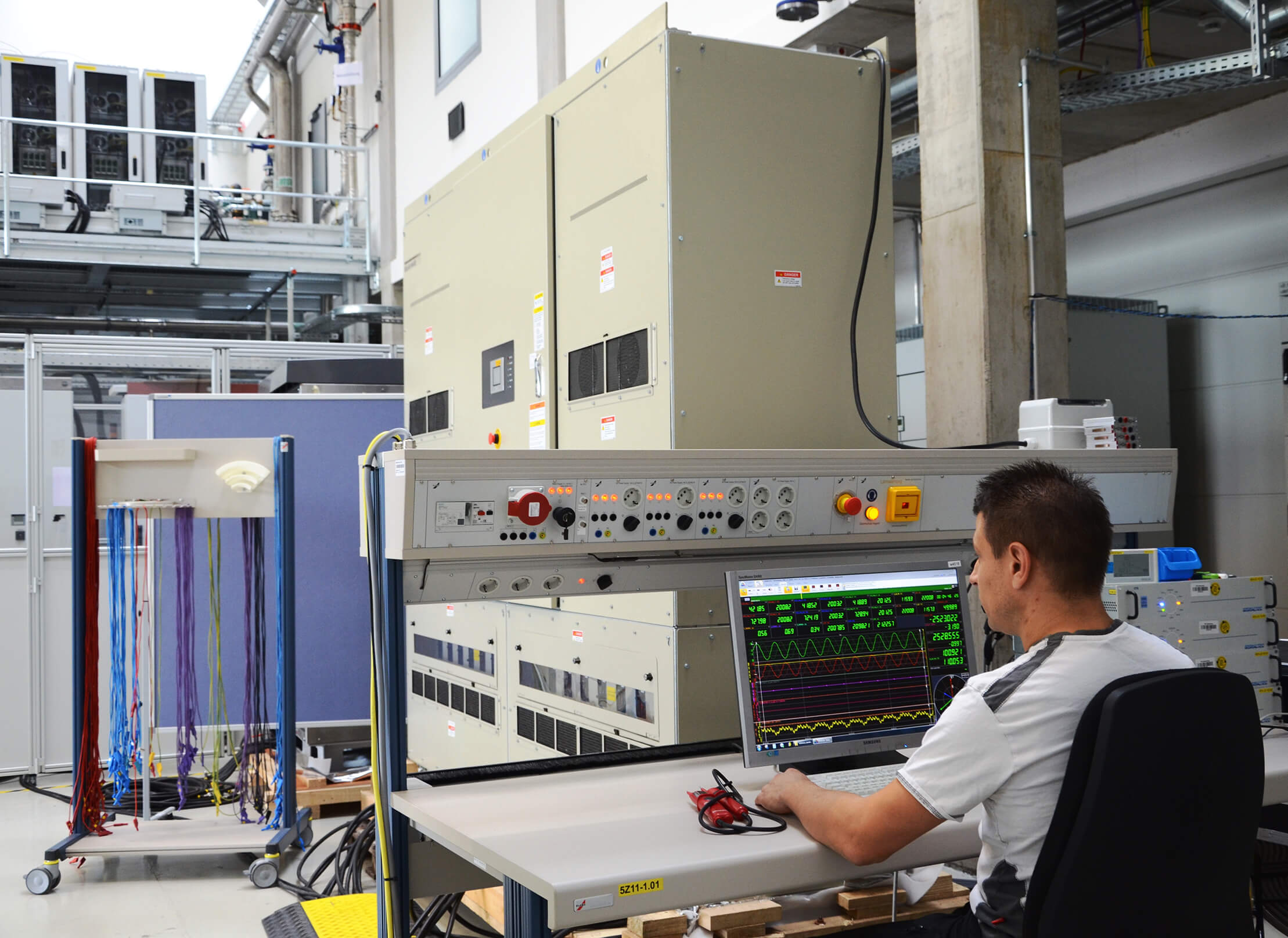New Multi-Megawatt Laboratory Demonstrates Operational Readiness with a 2.5 Megawatt Device under Test
In the future electricity grid, inverters must assume greater responsibility for the grid stability due to higher feed-in of fluctuating renewables. In Freiburg at the new multi-megawatt laboratory of the Fraunhofer Institute for Solar Energy Systems ISE, power electronic devices are developed and tested according to these new functionalities. A few weeks after officially opening the new lab building in North Freiburg, a solar inverter with a nominal power of 2.5 megawatts and a maximum DC voltage of 1500 volts was tested in the accredited TestLab Power Electronics.

Multi-Megawatt Laboratory Addresses New Challenges
The device was tested according to international grid connectivity regulations. Besides the power quality characteristics (harmonics, flicker, DC injection) and the active- and reactive power control in dependence of grid voltage and frequency, tests included the grid and system protection (shut-down when frequency and voltage limits are exceeded).
Other important tests deal with the behavior during short term grid faults, or so-called “under-/over-voltage ride through tests” (UVRT/OVRT). The new UVRT and OVRT test facility at Fraunhofer ISE is equipped to test large loads and generators up to 10 MW. The test equipment consists of controllable inductor and capacitor benches, which can be switched at the 20 kV medium voltage level. In this way, short term grid faults can be simulated and the reaction of the device under test can be tested. Generating units must prove that they can ride through such faults in order to prohibit critical grid situations. In particular, continued ride through during over-voltage events is required in more and more national and international grid regulations. “We make use of the results from our test lab to further develop the grid connectivity regulations and also to find the technical solutions that make a secure and reliable grid operation possible for an energy system based on 100 percent renewables, that is to say, on 100 percent power-electronics,” remarks Sönke Rogalla, Department Head of Inverters in Power Grids at Fraunhofer ISE.
TestLab Power Electronics of Fraunhofer ISE
In the accredited Testlab Power Electronics, devices which are connected to the low-voltage level can be currently tested up to a power of 3.2 MVA, which will be perspectively expanded up to 6.5 MVA in the future. Devices with connectivity to the medium voltage level can be operated presently up to 10 MVA. “The laboratory is accredited according to the most recent testing requirements, e.g. the FGW TR3. Therefore, it offers the type tests according to the newly required technical connectivity rules for the low, medium, high and highest voltage levels,” explains Roland Singer, Head of the TestLab Power Electronics.
At the lab the electric characteristics of power electronic devices in the power range from about 100 kVA are tested, e.g. PV or battery inverters, but also fast charging stations for electric vehicles or combined heat and power plants (CHP). The TestLab Power Electronics is equipped with a highly dynamic grid simulator (1 MW), a climate chamber for units up to ca. 2.5 MVA (temperature range from -30°C to +80°C) as well as highly precise power measurement equipment for determining the efficiency. Moreover the test of islanded systems for grid independent power supply, so called microgrids, can be operated up to the multi-megawatt range.
Further Information
Last modified: